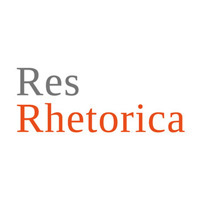On covert and overt sayers: A pragmatic-cognitive study into Barack Obama’s presidential rhetoric of image construction and (de)legitimisation
On covert and overt sayers: A pragmatic-cognitive study into Barack Obama’s presidential rhetoric of image construction and (de)legitimisation
Author(s): Anna Ewa WieczorekSubject(s): Studies of Literature
Published by: Polskie Towarzystwo Retoryczne
Keywords: discourse space; narrative report; presidential speech; rhetoric of image creation; sayer; short narrative; storytelling
Summary/Abstract: This article aims to investigate narrative reports based on the use of reported speech frames from a pragmatic-cognitive perspective. As rhetorical means of image creation and (de)legitimisation, they are frequently employed to represent utterances that constitute integral elements of short narratives incorporated into American presidential speeches. This paper’s main objective is to propose an original taxonomy of sayers, namely speakers of words reported (Halliday 1981, 1985; Vandelanotte 2006) in political discourse and to investigate their potential for self- and other-presentation and (de)legitimisation of one’s stance, actions and decisions. The data used for illustrative purposes comprise extracts from Barack Obama’s speeches delivered during his presidency (2009 and 2016) and have been selected from a bigger corpus of 125 presidential speeches by three American presidents: Barack Obama, Bill Clinton and John F. Kennedy. Findings in this study indicate that specific sayer types have greater potential for effective image formation and contribute to (de)legitimisation of events.
Journal: Res Rhetorica
- Issue Year: 7/2020
- Issue No: 4
- Page Range: 147-168
- Page Count: 22
- Language: English

